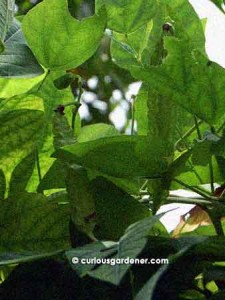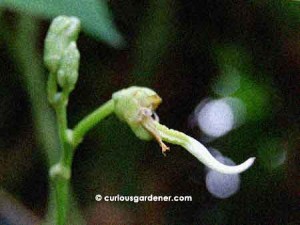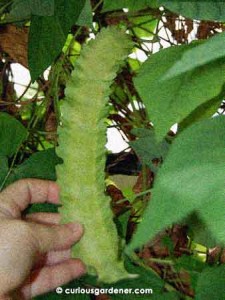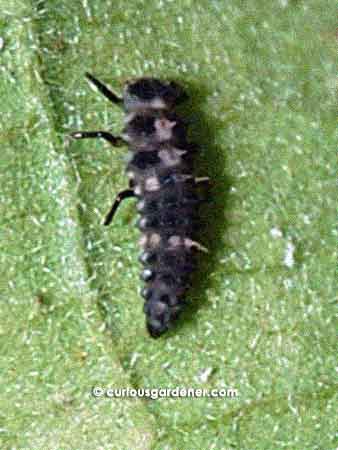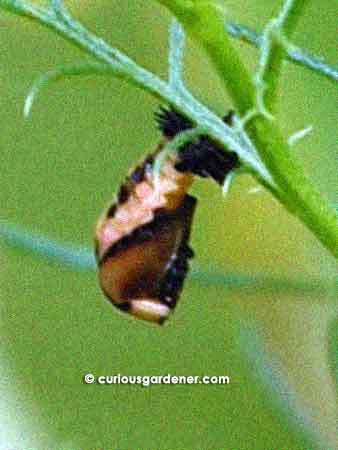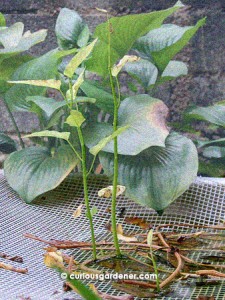Oh no, it’s raining again! And it looks like we’re in for a rainy spell. On the one hand, it’s nice to have the cooler, breezy weather, and not to have to worry about watering the plants. On the other hand, some plants don’t like too much rain.
Take my ill-fated first round of winter melon plants. I managed to grow 3 plants from the seeds from Novice Gardener. One of them became a meal for a pair of hairy caterpillars (darn things came out at night and I didn’t see them until it was too late ![]() ). The other pair grew quite well in little pots and I planted them out at a spanking-new trellis with compost-amended soil, expecting them to thrive. I had even scattered a decent amount of snail bait around to protect them. However, I didn’t count on the weather. The day after I planted them out, the rainy spell began. It rained every single day – sometimes at night, other times during the day. The bigger of the plants didn’t like it, and the base of its stem started turning brown and shrivelling slowly, and it literally keeled over and died. I have my fingers crossed that the other plant will be able to weather it out (pun intended) and keep growing.
). The other pair grew quite well in little pots and I planted them out at a spanking-new trellis with compost-amended soil, expecting them to thrive. I had even scattered a decent amount of snail bait around to protect them. However, I didn’t count on the weather. The day after I planted them out, the rainy spell began. It rained every single day – sometimes at night, other times during the day. The bigger of the plants didn’t like it, and the base of its stem started turning brown and shrivelling slowly, and it literally keeled over and died. I have my fingers crossed that the other plant will be able to weather it out (pun intended) and keep growing.
Too much rain also raises the likelihood that my okra plants are going to suffer from powdery mildew. After growing the plants in such close proximity last year and having them afflicted by the mildew, I took pains this year to spread them out to increase the air circulation. However, the combination of wet weather and our high humidity means the mildew is more or less inevitable.
I hope my other edible plants won’t be badly affected by the rain. The other veggies currently in “production” are the angled loofah, cucumber, bittergourd, long bean and brinjal plants. And of course I’m concerned for my Red Lady papaya trees that are in full swing now, because papaya trees don’t like having “wet feet”.
On the bright side, maybe my winged bean plants will prove whether or not the rain really has any bearing on their bean production. And, I can start growing plants that like wet, cooler weather. I’ve been holding on to seeds for broccoli, snow peas, beans and salad leaves that I didn’t expect to thrive in our warmer, drier (but still humid) months. It would be fantastic to see them grow to their full potential! Perhaps they will be a silver lining during these damp, dark days.
© 2011 curiousgardener.com All rights reserved.



